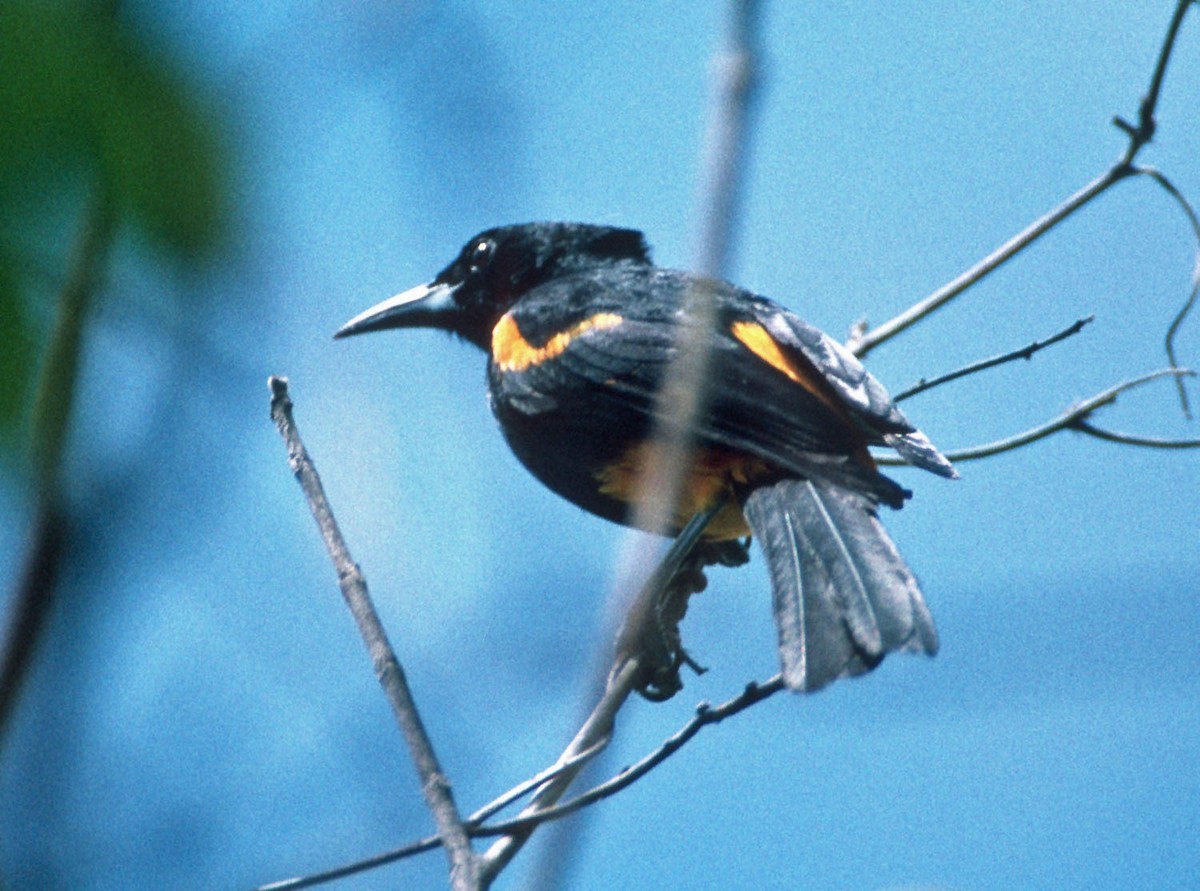St. Lucia Oriole
A species of New world orioles Scientific name : Icterus laudabilis Genus : New world orioles
St. Lucia Oriole, A species of New world orioles
Botanical name: Icterus laudabilis
Genus: New world orioles
Content
Description General Info
 Photo By Don Roberson
Photo By Don Roberson Description
These birds are identified as slim, long billed and largely black with flashes of russet orange on the shoulders, rump, belly and vent. The upper ridge of the beak, or culmen, is straight. The adult females are morphologically similar to males but with slightly paler orange patches. Immature orioles, in comparison to their mature counterparts, are mostly chestnut colored and have a golden-olive where the mature orioles are orange. This particular species is roughly 20 to 22 cm in head to body length with an average mass of 36.9 gram (both male and female measurements are included). Males and females have average wingspans of 98.7mm and 94.0mm, respectively. 
Size
22 cm
Nest Placement
Tree
Feeding Habits
St. Lucia Oriole primarily consumes insects, various arthropods, fruits, and nectar, employing specific foraging techniques suited to its diet. Adaptations enable it to exploit these food sources effectively, manifesting unique preferences that distinguish its feeding behavior.
Habitat
St. Lucia Oriole resides in various forested landscapes, encompassing lush mountain rainforests and arid coastal scrub forests. The species adapts to both primary and secondary forests, savoring the peripheries of certain plantations and thriving within mangrove ecosystems. It is more populous in humid upland forests, exhibiting a broad elevation range from sea level habitats up to 700 meters. The presence of st. Lucia Oriole signifies a healthy blend of woodland habitats, including dry scrub and richer, moisture-laden environments.
Dite type
Omnivorous
General Info
Feeding Habits
Bird food type
Behavior
Typical of the Icterid family, St. Lucia orioles exhibit wide range of foraging adaptations. They feed on both fruits and insects. St. Lucia orioles have been observed stripping bark while foraging, in the manner of the Jamaican Oriole. They produce a typical hanging oriole nest, which is basket shaped, and woven from plant fibers. The St. Lucia oriole nests under large fronds of banana plants and in coconut palms. Females lay 2-3 eggs at a time. Males do not feed the female during nesting, but they may aid in provisioning the young. Nesting occurs through April to early June. 
Distribution Area
St. Lucia orioles are endemic to, and exclusively found on the main island of St. Lucia. They are the only resident orioles on the island, however, Baltimore and Orchard orioles may be found in the region as vagrants. 
Species Status
Recently, there has been a decline in both the population size and distribution, as the St. Lucia orioles have become more scarce and localized. They are currently classified as Endangered on the IUCN Red List with a population estimated at over 1,000 adults (although not drastically over). There are many factors that may pose a threat to the species. Potential hazards include habitat loss, pesticide spraying, and parasitism by shiny cowbirds (Molothrus bonariensis). More studies are needed to understand the effects they have on St. Lucia oriole populations. 

 Photo By Don Roberson
Photo By Don Roberson